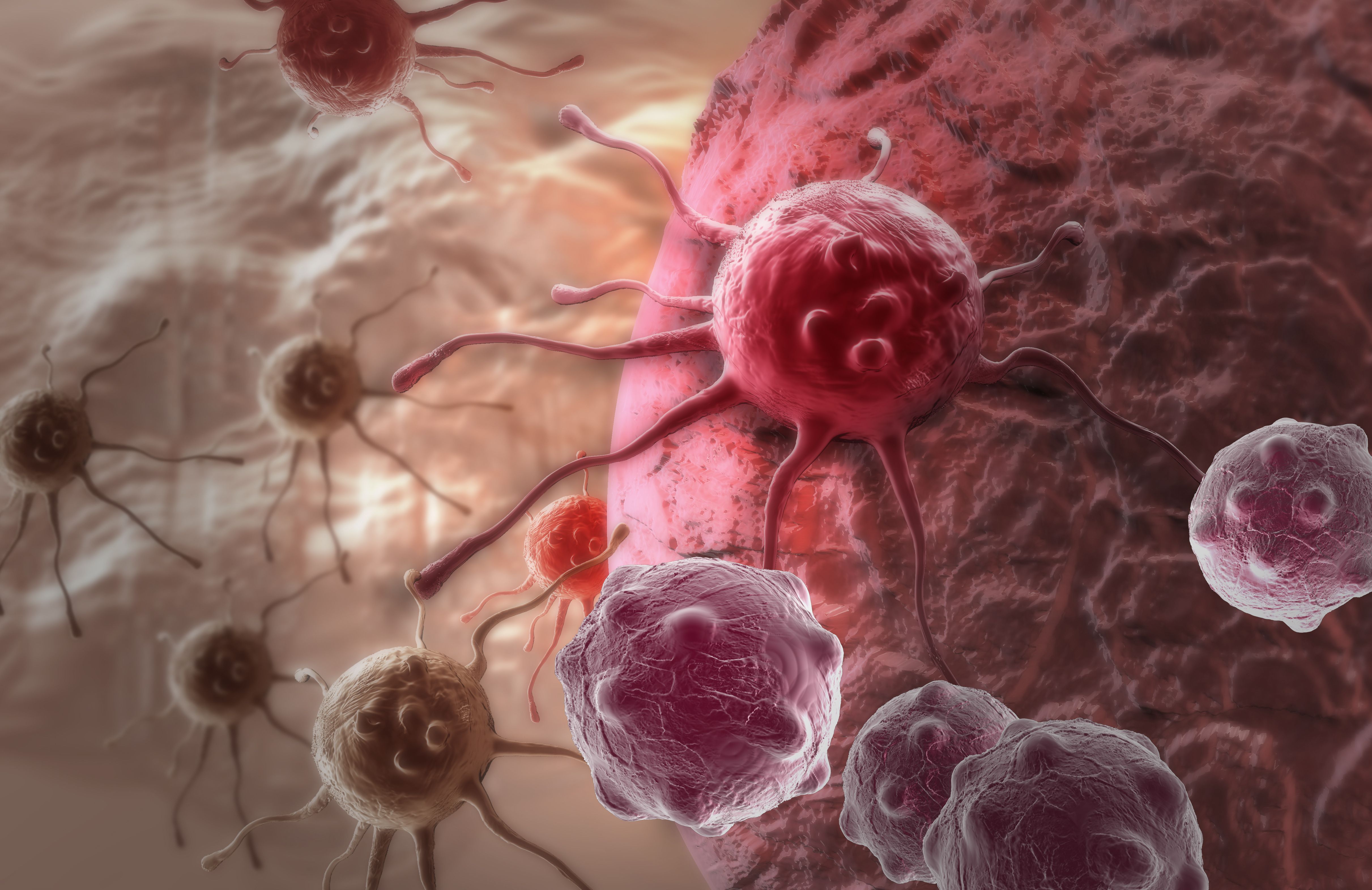Nivolumab/Ipilimumab Continues to Show Survival Benefit in Melanoma
The CheckMate 067 trial found that, at a 10-year follow-up, nivolumab/ipilimumab elicited a median OS of 71.9 months in patients with previously untreated, advanced melanoma.
The CheckMate 067 trial found that, at a 10-year follow-up, nivolumab/ipilimumab elicited a median OS of 71.9 months in patients with previously untreated, advanced melanoma.

Nivolumab (Opdivo) plus ipilimumab (Yervoy) or nivolumab monotherapy demonstrated a continued, ongoing survival benefit when compared with ipilimumab monotherapy, in patients with advanced melanoma, according to the randomized, double-blind phase 3 CheckMate 067 trial (NCT01844505) published in The New England Journal of Medicine.
At a median follow-up of 10 years, patients who received nivolumab plus ipilimumab experienced a median overall survival (OS) of 71.9 months (95% CI, 38.2-114.4), patients who received nivolumab monotherapy had a median OS of 36.9 months (95% CI, 28.2-58.7), and patients who received ipilimumab had a median OS of 19.9 months (95% CI, 16.8-24.6). The HR for death for nivolumab plus ipilimumab vs ipilimumab monotherapy was 0.53 (95% CI, 0.44-0.65) and the HR for nivolumab monotherapy vs ipilimumab monotherapy was 0.63 (95% CI, 0.52-0.76).
Also, the median melanoma-specific survival was over 120 months for nivolumab plus ipilimumab (95% CI, 71.8-not reached [NR]), and 37% of these patients were alive at the end of the trial, the median melanoma-specific survival was 49.4 months with nivolumab monotherapy (95% CI, 35.1-119.4), and 21.9 months with ipilimumab (95% CI, 18.1-27.4). At 10 years, melanoma-specific survival was 52% with nivolumab with ipilimumab, 44% with nivolumab monotherapy, and 23% with ipilimumab monotherapy.
There was a total of 61 deaths reported after 5-years of follow-up; 39 were attributed to melanoma (13 in the combination group, 11 in the nivolumab monotherapy group, and 15 in the ipilimumab monotherapy group).
“As compared with ipilimumab monotherapy, nivolumab-containing therapies have continued to show a prolonged survival benefit in patients with advanced melanoma, with no new safety signals,” lead study author Jedd D. Wolchok, MD, PhD, professor of medicine and director of the Sandra and Edward Meyer Cancer Center at Weill Cornell Medical College, and fellow authors wrote in the study. “These 10-year data underscore how immune checkpoint inhibitor therapy has helped to change the long-term prognosis for patients with advanced melanoma and highlight the potential for a cure in patients who have a response to this type of treatment.”
A total of 945 patients were randomly assigned, in a 1:1:1 ratio, to receive nivolumab plus ipilimumab (n = 314), nivolumab monotherapy (n = 316), or ipilimumab monotherapy (n= 315). Dosage is as follows: in the combination group, 1 mg/kg of intravenous (IV) nivolumab plus 3 mg/kg of IV ipilimumab once every 3 weeks for 4 doses, then 3 mg/kg of nivolumab once every 2 weeks; in the nivolumab monotherapy group, 3 mg/kg of nivolumab once every 2 weeks plus an ipilimumab-matched placebo; in the ipilimumab monotherapy group, 3 mg/kg of IV ipilimumab once every 3 weeks for 4 doses plus nivolumab-matched placebo.
Stratification was done according to BRAF mutation status (wild type vs mutation), metastasis stage per 7th edition of Cancer Staging Manual (M0, M1a, or M1b vs M1c), and PD-L1 expression in the tumor (less than 5% or indeterminate vs 5% or greater).
The trial’s primary end points were progression-free survival (PFS) in each group with nivolumab compared with the ipilimumab only group. Key secondary end points were investigator-assessed objective response (unconfirmed), efficacy in the nivolumab/ipilimumab group compared with the nivolumab monotherapy group, and survival outcomes per prespecified subgroups. Melanoma-specific survival and conformed objective response were exploratory end points.
Patients enrolled were 18 years or older with previously untreated, histologically confirmed, unresectable, advanced stage III or IV melanoma, had a known BRAF mutation status, and an ECOG performance status of 0 or 1.
PFS remained unchanged as survival curves plateaued following 3 years. The most common site of first progression was the lymph node (18% of the nivolumab/ipilimumab, 25% of the nivolumab group, and 35% of the ipilimumab group). After 3 years of follow-up, there were a total of 38 events for all 3 groups (19 new progressions, 17 deaths from nonmelanoma causes without documented progression, and 2 deaths from melanoma without documented progression). Further, 21 of these events occurred after 5 years of follow-up (8 new progressions, 2 deaths from melanoma, and 11 deaths from nonmelanoma causes).
Additionally, 36% and 46% of patients in the nivolumab/ipilimumab group, 50% and 56% of the nivolumab group, and 67% and 72% of the ipilimumab group received subsequent systemic and local therapy, respectively. Excluding patients who died without receiving subsequent therapy, the median time to initiation was more than 120 months (NR; 95% CI, 45.9-NR) in the nivolumab/ipilimumab group, 23.9 months (95% CI, 12.1-34.8) in the nivolumab monotherapy group, and 8.0 months (95% CI, 6.3-8.7) in the ipilimumab monotherapy group. Subsequent systemic therapy-free survival at 10 years was 52% with nivolumab/ipilimumab, 37% with nivolumab, and 13% with ipilimumab.
Since the 5-year analysis, no new safety signals were observed in any trial groups and there were no new deaths related to treatment. The incidence of spontaneously reported late treatment-related adverse events (AEs) was low across all groups.
Reference
Wolchok JD, Chiarion-Sileni V, Rutkowski P, et al. Final, 10-year outcomes with nivolumab plus ipilimumab in advanced melanoma. N Engl J Med. 2025;392(1):11-22. doi:10.1056/NEJMoa2407417